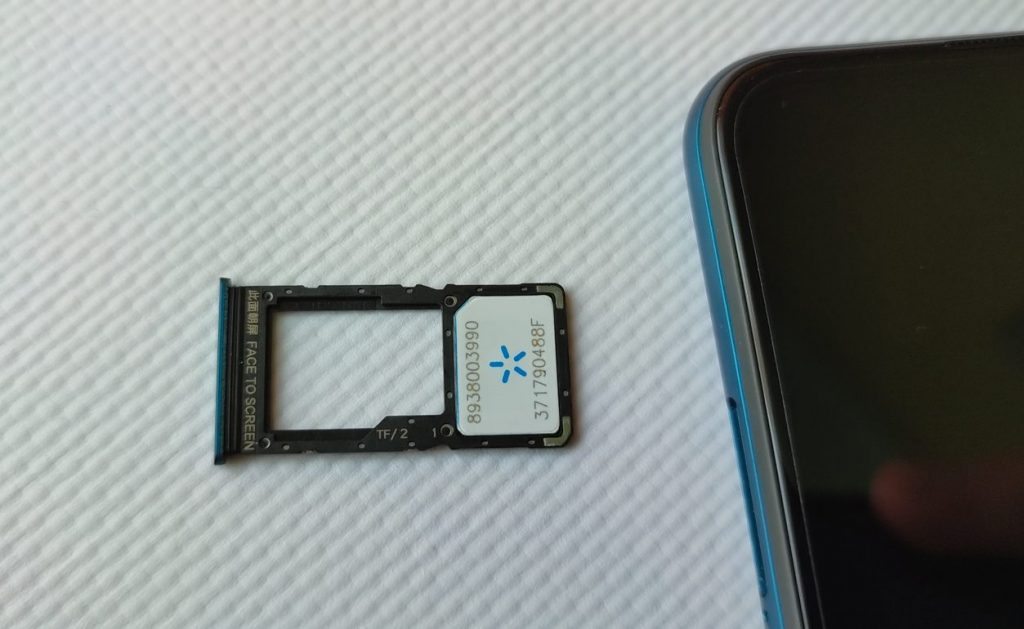
Before ordering the Redmi Note 10 5G from us, an order was placed in China for the Poco M3 Pro. In fact, these are two clones that only differ in appearance and when ordering the M3 Pro from China, I did not believe that the Note 10 5G appeared with us officially. But Xiaomi knew how to surprise me, and after reviewing the Note 10 with support for fifth-generation networks, I have to review its clone. Since I described all the main nuances of this smartphone in the review in the link above. Here I focus only on the main differences and nuances.
Unpacking and appearance
Complete with a smartphone, you will find everything you need to comfortably use your smartphone. Silicone case, protective film already on the screen, cable and power adapter for a maximum of 22.5 watts.
But something else is bound to surprise the user. Namely, the unique design of the novelty, which was developed by Poco himself. Of course, the flight of the imagination of the designers of the company was played on the rear panel, as the front panel is an exact copy of everything we saw before and that is installed on the Note 10 5G.
The black and black area near the camera module is complemented by a reminder of who exactly was the creator of this “budget miracle”. It can be combined with yellow, blue (our version) or the same black rest of the surface. In the light everything glows with different reflections and of course smudges / blurs well as the rear panel surface is shiny.
The front panel has received three elements that suffer from gigantism: a lower bezel that can be hidden with a suitable theme, a large black plastic “shelf” in the transition from the bezel to the screen, and a cutout for the front camera.
In terms of thickness and weight, it turns out to be almost 9mm “sturdy” and weighs less than 200 grams. But in height it is quite compact – 160 mm. In the hand, it sits comfortably due to the side rounding of the back panel, and in the pocket of the jeans it does not protrude or interfere as much as my Redmi Note 10 Pro.
On the side edges, everything is standard, except that behind the three cutouts on the upper edge, there is no resonator, but an infrared transmitter to control the equipment and a microphone to reduce noise.
The tray contains only two SIM cards, or one SIM and one memory card.
In a full silicone case, the smartphone, of course, becomes heavier and thicker, but at the same time, with its bumps, it creates additional protection for the camera and the screen.
Key features
Since I already did a complete review of a device with similar characteristics, now we will go over the main characteristics and disadvantages of this solution:
Monitor: This is a compact IPS panel, with a maximum brightness of 536 nits and rather poor viewing angles. But there is support for a 90Hz refresh rate and this brightens the overall impression a bit. Maximum brightness comparison with Redmi Note 10 Pro:
Performance: The use of Dimensity 700 allowed Xiaomi in a cheaper smartphone to achieve performance on par with the Redmi Note 10 Pro. According to various tests and in games, the 700 does not show in any way worse than the Snapdragon 732G and gets hot less, but the main “scourge” of Mediatek can still be traced here. For example, in the game Call of Duty: Mobile, you cannot select above-average graphics settings, but the in-game FPS does not drop below 40. But the popular Genshin Impact runs on a minimal setting and produces 30 Stable FPS, but you can also choose a high level of graphics. It is true that the FPS will “jump” from 15 to 30. By the way, memory combinations from 4/64 GB to 6/128 GB. I have a younger version in the test and have not had any problems with it. Testing and FPS in games:
Cameras: three sensors, the main of which is 48 megapixels, from OmniVision (OV48B). The other two are 2 megapixels and do not deserve special attention. Images during the day, in good light, are often quite good (considering the cost of a smartphone), but the main complaint about this sensor is poor image detail, especially in low light. Also, a major drawback is the support for shooting only at Full HD resolution, 30 frames per second. Comparison of camera capabilities with Redmi Note 10 Pro:
Autonomy: the leader of our autonomy classification, like the Redmi Note 10 5G. For 2 hours on the WOT: Blitz game and the rest of the time on YouTube, it took up to 17 hours to fully download. It is true that it takes 2 hours to wait for the 5000 mAh battery to recharge, as the smartphone only supports 18W fast charging.
Other nuances: You like the presence of NFC and a working proximity sensor on your smartphone. To support fifth-generation networks, the manufacturer had to make a series of trade-offs. In particular, the smartphone lacks a notification sensor, there is no splash protection according to the IP53 standard, and there are no stereo speakers.
If this brief information is not enough for you to understand what a smartphone is, I suggest that you read the full review of your copy: Redmi Note 10 5G. Here I understand all the details in more detail (the video begins with an overview of the display features):
Read the latest news from the world of mobile technologies at google news, Facebook Y Twitterand also subscribe to Youtube Channel and buy smartphones at Telegram group

Introvert. Beer guru. Communicator. Travel fanatic. Web advocate. Certified alcohol geek. Tv buff. Subtly charming internet aficionado.
